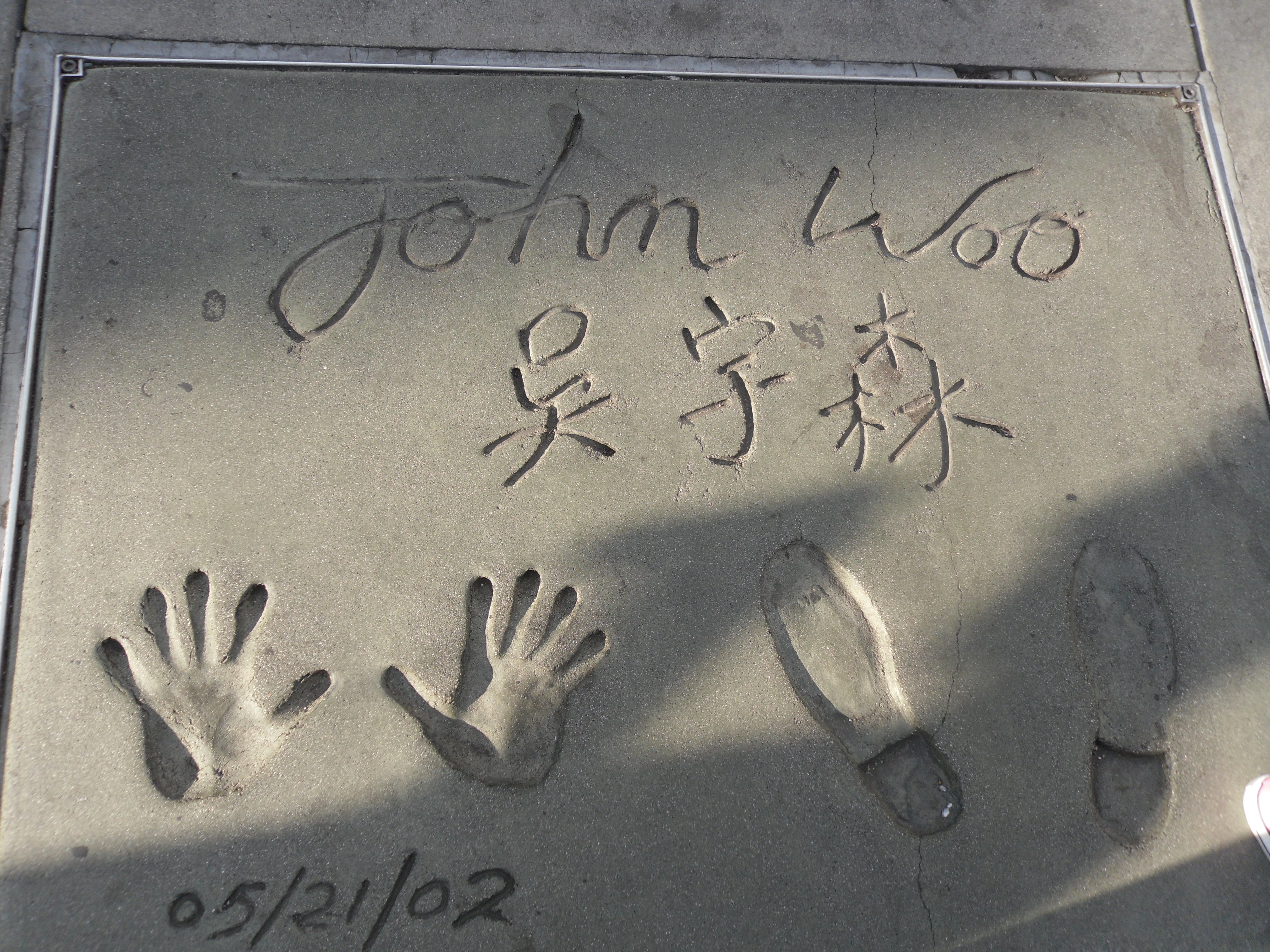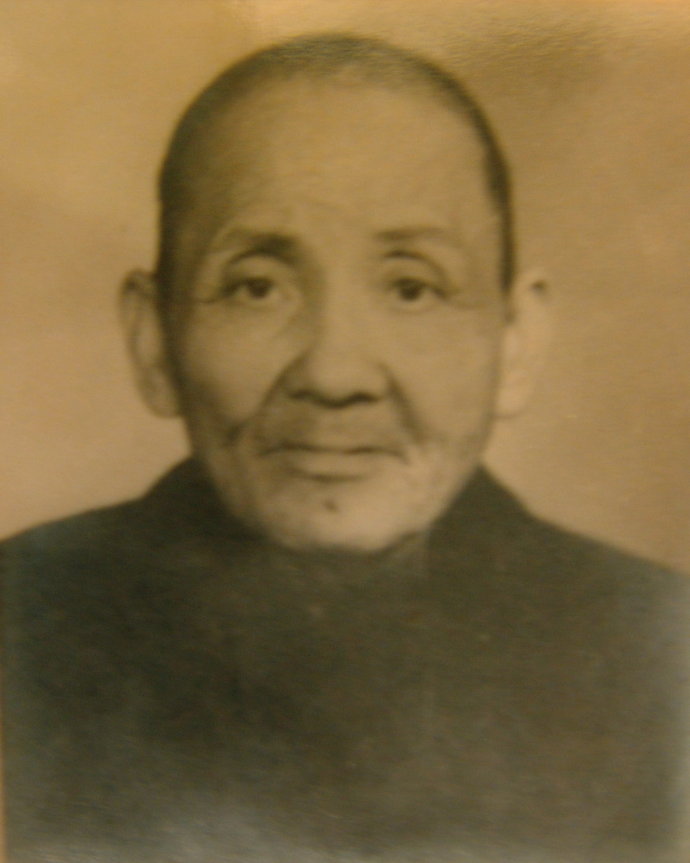|
Gun Fu
Gun ''fu'', a portmanteau of ''gun'' and ''kung fu'' (also known as gun ''kata'', bullet ballet, gymnastic gunplay or bullet arts), is a style of sophisticated close-quarters gunfight resembling a martial arts combat that combines firearms with hand-to-hand combat and traditional melee weapons in an approximately 50/50 ratio. It can be seen in Hong Kong action cinema, and in American action films influenced by it. The focus of gun ''fu'' is both artistic style and the usage of firearms in ways that they were not designed to be used. Shooting a gun from each hand (usually paired with jumping to the side at the same time), dual wielding, shots from behind the back, as well as the use of guns as melee weapons (usually knife fights) are all common. Other moves can involve submachine guns, assault rifles, combat shotguns, rocket launchers, and just about anything else that can be worked into a cinematic shot. It is often mixed with grappling maneuvers. Gun ''fu'' has become a s ... [...More Info...] [...Related Items...] OR: [Wikipedia] [Google] [Baidu] |
Portmanteau
In linguistics, a blend—also known as a blend word, lexical blend, or portmanteau—is a word formed by combining the meanings, and parts of the sounds, of two or more words together.Garner's Modern American Usage p. 644. English examples include '' smog'', coined by blending ''smoke'' and ''fog'', and '''', from ''motor'' ('' motorist'') and ''hotel''. A blend is similar to a [...More Info...] [...Related Items...] OR: [Wikipedia] [Google] [Baidu] |
Stunt
A stunt is an unusual, difficult, dramatic physical feat that may require a special skill, performed for artistic purposes usually for a public audience, as on television or in theaters or cinema. Stunts are a feature of many action films. Before computer-generated imagery special effects, these depictions were limited to the use of models, false perspective and other in-camera effects, unless the creator could find someone willing to carry them out, even such dangerous acts as jumping from car to car in motion or hanging from the edge of a skyscraper: the stunt performer or stunt double. Types of stunt effects Practical effects One of the most-frequently used practical stunts is stage combat. Although contact is normally avoided, many elements of stage combat, such as sword fighting, martial arts, and acrobatics required contact between performers in order to facilitate the creation of a particular effect, such as noise or physical interaction. Stunt performances are highly c ... [...More Info...] [...Related Items...] OR: [Wikipedia] [Google] [Baidu] |
A Better Tomorrow
''A Better Tomorrow'' () is a 1986 Hong Kong action film directed, co-written and co-produced by John Woo, co-produced by Tsui Hark, and starring Ti Lung, Leslie Cheung and Chow Yun-fat. The film had a profound influence on Hong Kong action cinema, and has been recognised as a landmark film credited with setting the template for the heroic bloodshed genre, with considerable influence on both the Cinema of Hong Kong, Hong Kong film industry and Cinema of the United States, Hollywood. Produced with a tight budget and released with virtually no advertising, ''A Better Tomorrow'' broke Hong Kong's box office record and went on to become a blockbuster in Asia. It is regarded as one of the greatest Chinese-language films ever made, ranking #2 on the Hong Kong Film Awards#Best 100 Chinese Motion Pictures, Best 100 Chinese Motion Pictures list in 2005. Its success led to a sequel, ''A Better Tomorrow II'', also directed by Woo, and ''A Better Tomorrow 3, A Better Tomorrow 3: Love & De ... [...More Info...] [...Related Items...] OR: [Wikipedia] [Google] [Baidu] |
Gangster Film
A gangster film or gangster movie is a film belonging to a genre that focuses on gangs and organized crime. It is a subgenre of crime film, that may involve large criminal organizations, or small gangs formed to perform certain illegal acts. The genre is differentiated from Westerns and the gangs of that genre. Overview In 2008, the American Film Institute defines the genre as "centered on organized crime or maverick criminals in a twentieth century setting". The institute named it one of the 10 "classic genres" in its 10 Top 10 list, released in 2008. The list recognizes 3 films from 1931 & 1932, '' Scarface'', '' The Public Enemy'' & '' Little Caesar''. Only 1 film made the list from 1933 to 1966, 1949's '' White Heat''. This was at least partly due to the limitations on the genre imposed by the Hays Code, which was abandoned in favor of the Motion Picture Association of America film rating system in 1968. Beginning in the 1960s, the genre was revitalized in the New Hollywo ... [...More Info...] [...Related Items...] OR: [Wikipedia] [Google] [Baidu] |
Guns
A gun is a device that propels a projectile using pressure or explosive force. The projectiles are typically solid, but can also be pressurized liquid (e.g. in water guns or cannons), or gas (e.g. light-gas gun). Solid projectiles may be free-flying (as with bullets and artillery shells) or tethered (as with Tasers, spearguns and harpoon guns). A large-caliber gun is also called a ''cannon''. Guns were designed as weapons for military use, and then found use in hunting. Now, there are guns, e.g., toy guns, water guns, paintball guns, etc., for many purposes. The means of projectile propulsion vary according to designs, but are traditionally effected pneumatically by a high gas pressure contained within a barrel tube (gun barrel), produced either through the rapid exothermic combustion of propellants (as with firearms), or by mechanical compression (as with air guns). The high-pressure gas is introduced behind the projectile, pushing and accelerating it down the ... [...More Info...] [...Related Items...] OR: [Wikipedia] [Google] [Baidu] |
John Woo
John Woo Yu-sen ( zh, t= ; born 22 September 1946) is a Hongkongers, Hong Kong film director known as a highly influential figure in the action film genre. The recipient of various accolades, including a Hong Kong Film Awards, Hong Kong Film Award for Hong Kong Film Awards, Best Picture, Hong Kong Film Award for Best Director, Best Director, and Hong Kong Film Award for Best Film Editing, Best Editing, as well as a Golden Horse Film Festival and Awards, Golden Horse Award, an Asia Pacific Screen Awards, Asia Pacific Screen Award and a Saturn Awards, Saturn Award, he is regarded as a pioneer of heroic bloodshed films and the gun fu genre in Hong Kong action cinema. He is known for his highly chaotic "bullet ballet" action sequences, stylized imagery, Mexican standoffs, frequent use of slow motion and allusions to ''wuxia'', film noir and Western (genre), Western cinema. Considered one of the major figures of Cinema of Hong Kong, Hong Kong cinema, Woo has directed several notable Ho ... [...More Info...] [...Related Items...] OR: [Wikipedia] [Google] [Baidu] |
Dancing
Dance is an art form, consisting of sequences of body movements with aesthetic and often symbolic value, either improvised or purposefully selected. Dance can be categorized and described by its choreography, by its repertoire of movements or by its historical period or place of origin. Dance is typically performed with musical accompaniment, and sometimes with the dancer simultaneously using a musical instrument themselves. Two common types of group dance are theatrical and participatory dance. Both types of dance may have special functions, whether social, ceremonial, competitive, erotic, martial, sacred or liturgical. Dance is not solely restricted to performance, as dance is used as a form of exercise and occasionally training for other sports and activities. Dance performances and dancing competitions are found across the world exhibiting various different styles and standards. Dance may also be participated in alone as a form of exercise or self expression. Dancing i ... [...More Info...] [...Related Items...] OR: [Wikipedia] [Google] [Baidu] |
Punch (combat)
A punch is a strike (attack), striking blow with the fist. It is used in most martial arts and combat sports, most notably western boxing, where it is the only type of offensive technique allowed. In sports, hand wraps or other padding such as gloves may be used to protect athletes and practitioners from injuring themselves. The use of punches varies between different martial arts and combat sports. Styles such as western boxing, Suntukan or Russian fist fighting use punches alone, while others such as kickboxing, Muay Thai, Lethwei or karate may use both punches and kicks. Others such as wrestling (excluding professional wrestling) and judo (punches and other striking techniques, atemi, are present in judo kata, but are forbidden in competitions) do not use punches at all. There are many types of punches and as a result, different styles encompass varying types of punching techniques. Basic types This is not a comprehensive list of all punches and may need to be updated, du ... [...More Info...] [...Related Items...] OR: [Wikipedia] [Google] [Baidu] |
Martial Artists
Martial arts are codified systems and traditions of combat practiced for a number of reasons such as self-defence; military and law enforcement applications; competition; physical, mental, and spiritual development; entertainment; and the preservation of a nation's intangible cultural heritage. The concept of martial arts was originally associated with East Asian tradition, but subsequently the term has been applied to practices that originated outside that region. Etymology "Martial arts" is a direct English translation of the Sino-Japanese word (, ). Literally, it refers to "武 martial" and "芸 arts". The term ''martial arts'' was popularized by mainstream popular culture during the 1960s to 1970s, notably by Hong Kong martial arts films (most famously those of Bruce Lee) during the so-called " chopsocky" wave of the early 1970s. According to John Clements, the term ''martial arts'' itself is derived from an older Latin term meaning "arts of Mars", the Roman god of war, ... [...More Info...] [...Related Items...] OR: [Wikipedia] [Google] [Baidu] |
Jackie Chan
Fang Shilong (born Chan Kong-sang; 7 April 1954), known professionally as Jackie Chan,; is a Hong Kong actor and filmmaker, known for his slapstick, acrobatic fighting style, comic timing, and innovative stunts, which he typically performs himself. With a Jackie Chan filmography, film career spanning more than sixty years, he is regarded as one of the most Cultural icon, iconic and influential martial artists in the history of cinema. Films in which he has appeared in have grossed over $5.8 billion worldwide. Starting as one of the China Drama Academy#The Seven Little Fortunes, Seven Little Fortunes at the China Drama Academy, where he was trained in acrobatics, martial arts and acting, Chan entered the Hong Kong film industry as a stuntman before making the transition to acting. His breakthrough came with the action comedy ''Snake in the Eagle's Shadow'' (1978). He then starred in similar action comedies such as ''Drunken Master'' (1978) and ''The Young Master'' (1980 ... [...More Info...] [...Related Items...] OR: [Wikipedia] [Google] [Baidu] |
Bruce Lee
Bruce Lee (born Lee Jun-fan; November 27, 1940 – July 20, 1973) was an American-born Hong Kong martial artist, actor, filmmaker, and philosopher. He was the founder of Jeet Kune Do, a hybrid martial arts philosophy which was formed from Lee's experiences in unarmed fighting and self-defense—as well as Eclecticism, eclectic, Zen Buddhism, Zen Buddhist and Taoism, Taoist philosophies—as a new school of martial arts thought. With a Bruce Lee filmography, film career spanning Hong Kong and the United States, Lee is regarded as the first global Chinese film star and one of the most influential martial artists in the history of cinema. Known for his roles in five feature-length Martial arts film, martial arts films, Lee is credited with helping to popularize martial arts films in the 1970s and promoting Hong Kong action cinema. Born in San Francisco and raised in British Hong Kong, Lee was introduced to the Cinema of Hong Kong, Hong Kong film industry as a child actor by L ... [...More Info...] [...Related Items...] OR: [Wikipedia] [Google] [Baidu] |
Kung Fu Film
Kung fu film () is a subgenre of martial arts films and Hong Kong action cinema set in the contemporary period and featuring realistic martial arts. It lacks the fantasy elements seen in ''wuxia'', a related martial arts genre that uses historical settings based on ancient China. Swordplay is also less common in kung-fu films than in ''wuxia'' and fighting is done through unarmed combat. Kung fu films are an important product of Cinema of Hong Kong, Hong Kong cinema and the Western world, where it was exported. Studios in Hong Kong produce both wuxia and kung fu films. History The kung fu genre was born in Hong Kong as a backlash against the supernatural tropes of wuxia. The wuxia of the period, called ''shenguai wuxia'', combined ''shenmo, shenguai'' fantasy with the martial arts of wuxia. Producers of wuxia depended on special effects to draw in larger audiences like the use of animation in fight scenes. The popularity of shenguai wuxia waned because of its cheap effects and fan ... [...More Info...] [...Related Items...] OR: [Wikipedia] [Google] [Baidu] |









